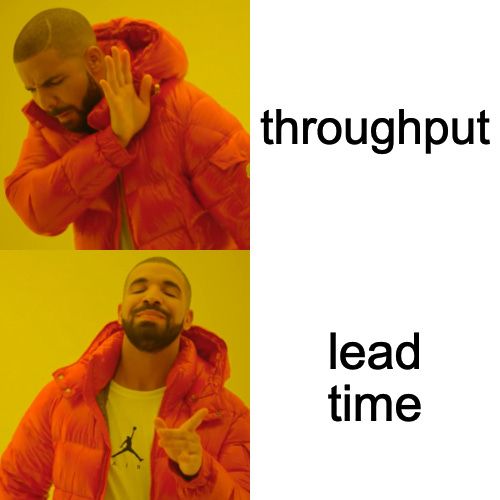Optimizing throughput sounds smart—until it costs you real money.
How consumer habits sneak into business decisions—and hurt performance.
Recently, I had what might be the worst travel experience of my life. A combination of the worst airport and the worst airline.
First, we stood in line at the gate—standard fare. Then we were herded down a narrow staircase into a holding room. After that, they led us into a fenced-off corridor, standing outside without any shelter, in the cold, without jackets, like cattle on their final walk to the slaughterhouse.
Why? All so that the plane wouldn’t spend a single unnecessary second on the ground.
This kind of "efficiency" isn't unique to airlines. You see it everywhere in B2C—where most of us spend our lives as consumers, especially in our early years.
It's always about maximizing throughput. The actual lead time—how long it takes from intent to outcome—is often ignored or forgotten altogether.
We’re conditioned for this from a young age.
Remember being told off for starting the dishwasher when 𝘫𝘶𝘴𝘵 𝘰𝘯𝘦 𝘮𝘰𝘳𝘦 𝘱𝘭𝘢𝘵𝘦 could’ve fit? But what if there 𝘸𝘢𝘴𝘯’𝘵 another dirty plate at the time? So you wait. After the next meal, you add the plate—and now the kitchen is full of dirty dishes. Great throughput, terrible lead time.
And this mindset creeps into our business decisions.
Take the Vercel and Next.js community, for example. You often see posts like:
"I’ve built this awesome SaaS app, but nobody’s using it yet. When someone 𝘥𝘰𝘦𝘴 visit, it takes 4 seconds to load. What can I do?"
Here’s an idea: put it in a container and keep your cache warm.
"But then I’m paying for a container that nobody uses! That’s wasteful!"
That right there is the flaw in thinking.
Sure, your app isn't used most of the time—but when someone 𝘥𝘰𝘦𝘴 show up, you have seconds to make a good impression. Those cold-start delays can kill a lead.
Let’s do the math: If you need 10 website visits to get 1 click to your web app, and 10 users in your app to get 1 sign-up, that’s 100 ad clicks per registration. At €5 per click in a B2B market, that’s €500 for a single registration.
And you're worried about €10/month for a warm container?
You're not going to get that kind of cost-efficiency on AWS when you factor in hidden costs like load balancers. But platforms like DigitalOcean's App Platform make this kind of setup easily achievable.
So here’s my question to you:
When you run the dishwasher even though it 𝘤𝘰𝘶𝘭𝘥 have fit one more plate—are you being wasteful, or are you optimizing for lead time?

